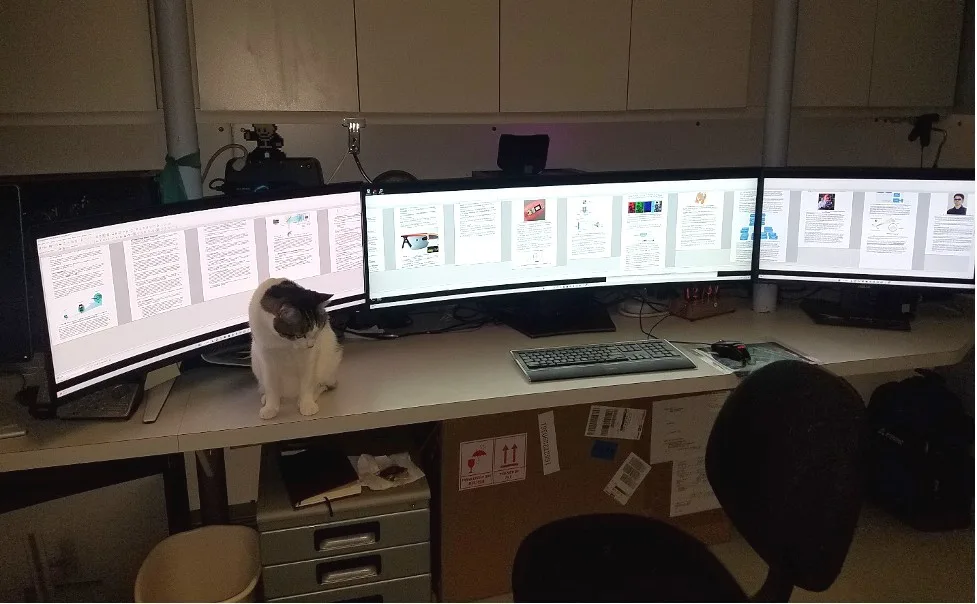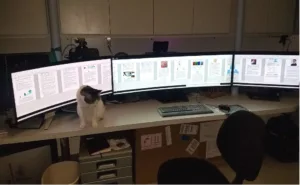One of the processes a (book) writer goes through is checking the galley. In the old days you used to get a ream of paper and you’d mark it and send back to the publisher – very time consuming and wasteful. Today it’s all electronic. But how does one get a sense of the whole book without printing it?

That’s an electronic galley of my new Augmented Reality book, that Sammy doesn’t seem interested in.
The monitor on the left is an Alienware 3840 × 1440, 144Hz, 37.5-in. In the middle is a Dell 49-inch dual QHD (5120 × 1440) curved monitor, and on the right an Asus 27-in 2560 × 1440, 144 Hz monitor. That comes to 16.6 Mpixels across nine-feet, nine inches of screen space (2.9m). They are being driven by an Nvidia GTX 4090 sitting next to an Intel i9-12900KS.
Fifteen pages can be view at once showing the placement of images and text and making it possible to pick out formatting errors instantly. If those pages could be scanned in nine seconds (and they can), and it takes a second to load the next 15, then a 410-page book can be looked at in 280 seconds. That’s less than five minutes and that’s productivity.
The rig takes up seven-feet, 10 inches by two-feet of desk space, or15.6 ft2 (2.3 × 0.6 m or 1.38m2) which may be beyond the reach of a lot of people. I’ve been in publishing houses where they have huge planning tables four by eight feet (1.2 × 2.4m), or more, with proof pages spread across the surface and editors with red and blue pencils making annotation on them – usually a small stool was nearby to help reach across to the interior pages. Guess how long that work took and how many people were involved.
I chose the 1440 monitors because they are readily available and very reasonably priced. You can of could do the same thing with 4K and 5K monitors, but the cost is three to four times as much.
And now, back to the book – oh, and by the way, I did find about a half dozen formatting problems I might have otherwise missed if I was just looking at one, two or four pages at a time. And it would have taken me much longer going back and forth.
Dr. Jon Peddie is the author of The History of the GPU (a 3-part series), Ray Tracing: A Tool for All, Augmented Reality, and The History of Visual Magic in Computers.

